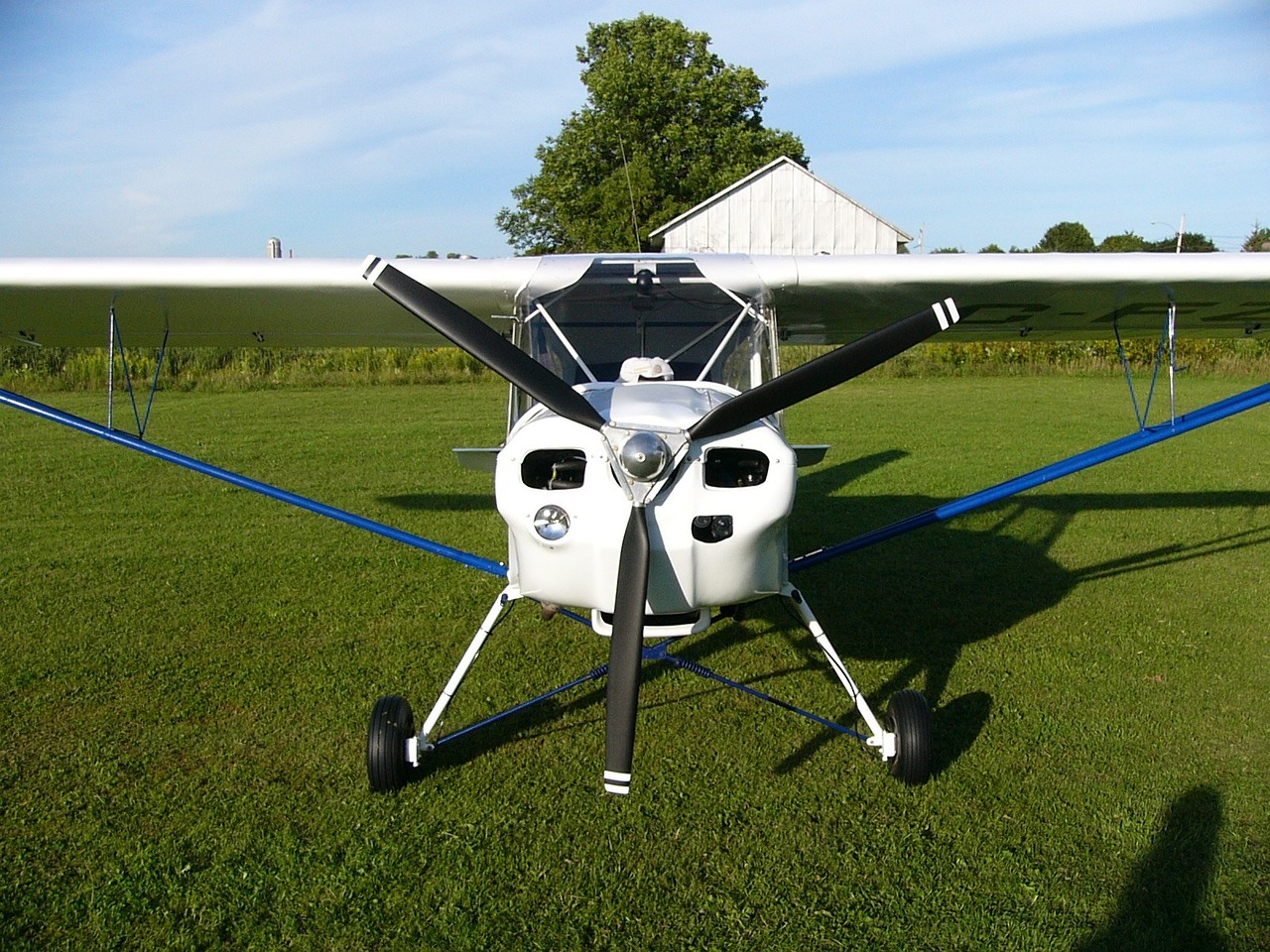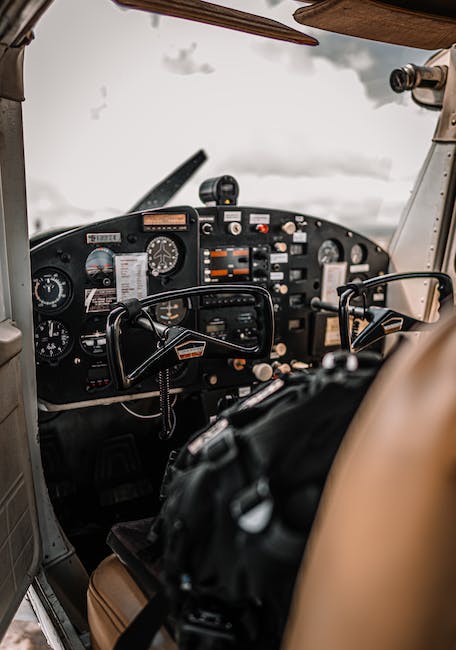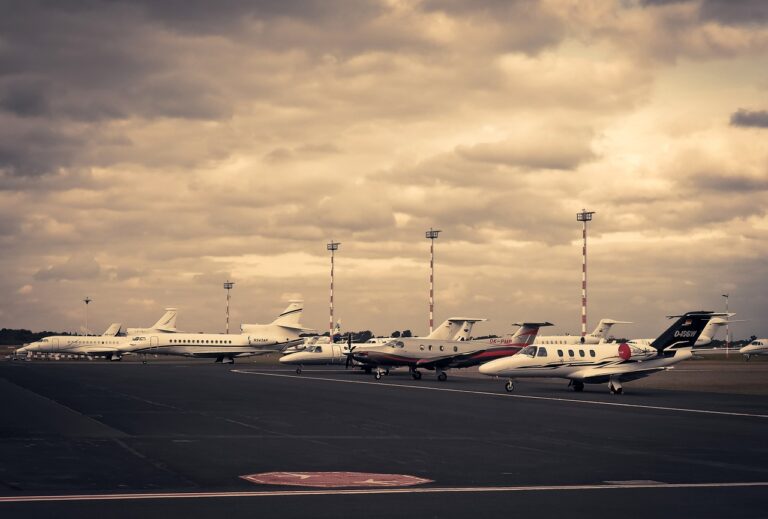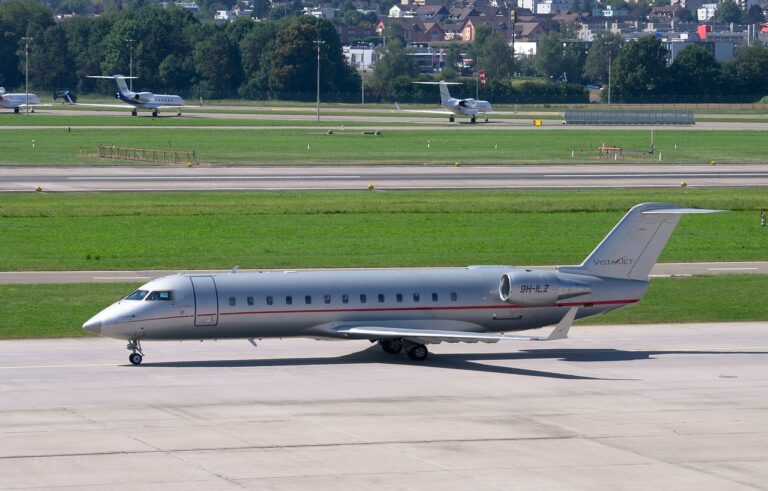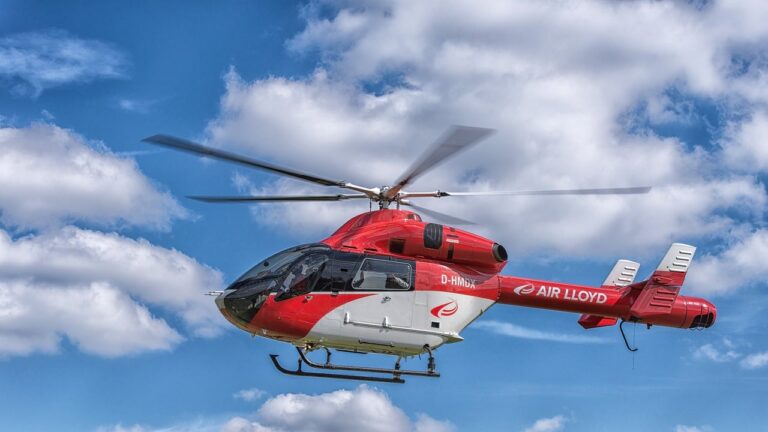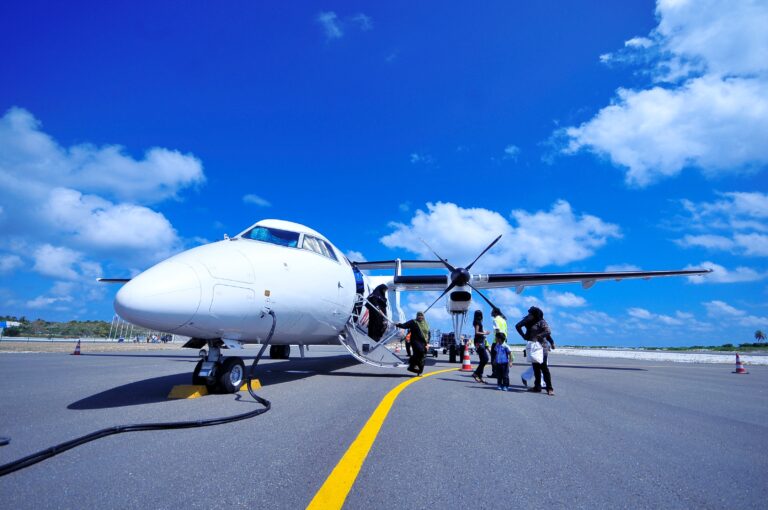What Are the Disadvantages of Jet Planes
In a world where the sky is often dominated by sleek and powerful jet planes, it’s easy to be swept away by the marvels of modern aviation. These magnificent flying machines have revolutionized the way we travel, connecting distant lands and shrinking the globe. However, just like every coin has two sides, every soaring success also bears potential shortcomings. While the advantages of jet planes continue to capture our imagination, it is equally important to delve into the cloud-covered realm of their disadvantages. Join us on a journey through the pitfalls of these speed demons that grace our skies, as we explore the drawbacks that lie beneath those dazzling wings. Brace yourself for an eye-opening exploration of the shadow cast by the jet plane’s ubiquitous presence in the world of aviation.
Table of Contents
- Jet Planes and Climate Change: The Environmental Impact
- Noise Pollution: The Negative Consequences of Jet Engine Noise
- Fuel Usage and Financial Costs: The Economic Drawbacks of Jet Travel
- Jet Lag: The Physiological Consequences of Rapid Timezone Changes
- Safety Concerns: The Risks and Challenges of Flying in Jet Planes
- Alternative Solutions: Exploring Sustainable Air Travel Options
- FAQs
- In Conclusion
Jet Planes and Climate Change: The Environmental Impact
Jet planes have long been a luxurious mode of transportation, whisking people away to far-flung destinations. While the excitement of hopping on a plane and soaring through the sky is undeniable, it is essential to consider the environmental impact of these mighty machines. Here are a few notable factors:
- Greenhouse Gas Emissions: One of the most significant concerns is the emission of greenhouse gases by jet planes. These emissions, primarily carbon dioxide (CO2) and nitrogen oxides (NOx), contribute to global warming and air pollution.
- Air Quality: Jet planes release various pollutants, including sulfur oxides (SOx), into the atmosphere. These pollutants can contribute to respiratory problems, especially in densely populated areas surrounding airports. Additionally, the contrails formed by jet plane engines can lead to the formation of cirrus clouds, intensifying global warming.
- Fuel Consumption: Jet planes require vast amounts of fuel to propel thousands of passengers through the air. This high fuel consumption not only depletes fossil fuel reserves but also contributes to the emission of greenhouse gases.
- Noise Pollution: The roar of jet engines can be heard for miles around airports, causing disturbance and annoyance to both humans and wildlife in the vicinity. Noise pollution created by jet planes can have adverse effects on mental health, sleep patterns, and animal habitat.
Considering the environmental impact of jet planes is crucial in finding sustainable solutions for air travel. Innovations in aircraft design, development of alternative fuels, and stricter regulations can help mitigate the negative effects and pave the way for a greener future of aviation.
Noise Pollution: The Negative Consequences of Jet Engine Noise
Jet engine noise has become a growing concern in today’s modern world, as its negative consequences are far-reaching and detrimental to both humans and the environment. One distressing effect of this type of noise pollution is its impact on the physical and mental well-being of individuals residing near airports or flight paths. Studies have shown that prolonged exposure to jet engine noise can lead to sleep disturbances, increased stress levels, and even cardiovascular diseases. Moreover, wildlife is not immune to the disruptive effects of this noise pollution. Birds, for instance, often rely on their sense of hearing for navigation and communication; thus, the constant roar of jet engines interferes with their natural behavior and can lead to confusion and disorientation. Additionally, the excessive noise generated by these engines contributes to the deterioration of sound-sensitive habitats, disrupting the delicate balance of ecosystems. It is crucial that we recognize the grave consequences of jet engine noise and take concrete measures, such as implementing noise reduction technologies and flight path regulations, to mitigate its adverse effects on both human and environmental well-being.
Fuel Usage and Financial Costs: The Economic Drawbacks of Jet Travel
Jet travel, while undoubtedly convenient and fast, comes with its fair share of economic disadvantages. One of the prominent drawbacks is the exorbitant fuel consumption associated with these powerful machines. Jets use an enormous amount of fuel per hour of flight, and this translates to a substantial financial burden for airlines and ultimately passengers. The reliance on fossil fuels not only poses environmental concerns but also results in soaring fuel costs, which can impact ticket prices and overall travel expenses. Furthermore, the maintenance and operation expenses of jets add to the economic implications, often draining the financial resources of airlines. With the constant rise in fuel prices and operational costs, it is crucial to be aware of the financial drawbacks of jet travel in order to make informed decisions regarding travel choices.
Jet Lag: The Physiological Consequences of Rapid Timezone Changes
Much like superheroes switching between dimensions, frequent travelers face their nemesis every time they cross timezones: jet lag. The human body, meticulously tuned to the natural fluctuations of day and night, struggles to adjust when thrust into a new timezone. This disorientation leads to a range of physiological consequences, affecting everything from sleep patterns to digestion. Here are some intriguing ways rapid timezone changes can wreak havoc on our bodies:
- Disrupted sleep: Jet lag often results in difficulty falling asleep or staying asleep throughout the night. This can leave individuals feeling groggy, tired, or unable to concentrate during the day.
- Altered hormone levels: The body’s internal clock, known as the circadian rhythm, works in harmony with the hypothalamus to regulate hormone production. Jet lag can throw off this delicate balance, leading to irregular hormone levels and potentially affecting mood and overall well-being.
- Impaired digestion: Timezone transitions can cause digestive distress, manifesting as stomachaches, constipation, or diarrhea. This is due to the disruption of the body’s natural rhythm, which affects the functioning of the digestive system.
- Mood swings: Jet lag can have a significant impact on mental health. Erratic sleep patterns, fluctuating hormone levels, and exhaustion can contribute to mood swings, irritability, and even bouts of depression.
While jet lag may seem like an unavoidable element of crossing timezones, understanding its physiological consequences helps us develop strategies to mitigate its effects. By taking steps to optimize sleep, regulate meal times, and adjust daily routines, individuals can reduce the impact of jet lag and smoothly transition into their new timezones.
Safety Concerns: The Risks and Challenges of Flying in Jet Planes
When it comes to flying in jet planes, it’s essential to be aware of the potential safety concerns that can arise during air travel. While the marvels of modern aviation have made jet planes a popular and efficient mode of transportation, it’s important to acknowledge the risks and challenges that come along with it. Some of the key safety concerns to keep in mind include:
- Turbulence: Air turbulence can be a nerve-wracking experience for passengers as it can result in sudden and unexpected jolts during flight.
- Pressurization: The pressurization systems in jet planes are designed to maintain a comfortable cabin pressure during flight. However, failures in these systems can cause discomfort or potential health risks for passengers.
- Bird Strikes: Although rare, collisions with birds during takeoff or landing can pose a threat to jet planes, potentially damaging the aircraft and requiring emergency procedures to be implemented.
- Engine Failures: While jet engines are highly reliable, occasional malfunctions can occur, leading to engine failures. Although these situations are rare, they require swift response from the flight crew to ensure the safety of all on board.
It is worth noting that the aviation industry has implemented robust safety protocols and regulations to address these concerns and minimize risks. From regular maintenance and inspections to pilot training and technological advancements, significant efforts are made to ensure the safety of passengers in jet planes. However, understanding these potential risks and challenges can help passengers remain informed and feel more at ease when embarking on their air travel journeys.
Alternative Solutions: Exploring Sustainable Air Travel Options
In our quest to uncover alternative solutions for sustainable air travel, we’ve delved into countless innovative concepts that not only promise to revolutionize the way we fly but also strive to mitigate the environmental impact of aviation. From electrically powered aircraft to utilizing biofuels, here are some captivating options on the horizon that hold immense potential:
- Electrically Powered Aircraft: Imagine soaring through the skies in an aircraft powered solely by electricity! These revolutionary planes have started making their debut, offering a quieter and cleaner flight experience, reducing emissions and noise pollution.
- Biofuels: One promising solution is the incorporation of biofuels made from organic sources. These renewable fuels can significantly lower greenhouse gas emissions and provide a greener alternative to traditional jet fuels.
- Hydrogen-powered Aircraft: Another exciting avenue being explored is the use of hydrogen as a sustainable fuel source for planes. Hydrogen-powered aircraft have the potential to produce zero carbon emissions, making them an incredibly environmentally friendly option.
- Sustainable Aviation Fuels: Aviation companies are focusing their efforts on developing sustainable aviation fuels (SAFs), which can be produced from various sustainable feedstocks. SAFs have proven capable of reducing carbon emissions and can be used as a drop-in replacement for conventional jet fuels.
These alternative solutions hold great promise and are spearheading the movement toward a greener future for air travel. While challenges remain, the dedication of researchers, industry leaders, and policymakers in exploring and implementing these options is a testament to our commitment to sustainable aviation.
FAQs
Q: What are the disadvantages of jet planes?
A: Jet planes have many advantages, such as high speed, efficiency, and the ability to cover long distances quickly. However, they also come with several disadvantages, including:
- Environmental Impact: Jet planes emit greenhouse gases, including carbon dioxide, which contribute to climate change. They also release nitrogen oxides and particulate matter into the atmosphere, which can lead to air pollution and negative health effects.
- Noise Pollution: Jet engines produce significant noise, especially during takeoff and landing. This can lead to noise pollution in surrounding areas and disturb communities near airports.
- Fuel Consumption: Jet planes require large amounts of fuel to operate, and their fuel efficiency can vary depending on factors such as aircraft design, speed, and altitude. High fuel consumption contributes to operating costs and environmental concerns.
- Limited Accessibility: Jet travel typically requires airports with long runways and appropriate facilities, which might not be available in remote or less-developed regions. This limits the accessibility of jet travel to certain areas.
- Initial Costs: Jet planes are expensive to manufacture, purchase, and maintain. This makes them less accessible to individuals and smaller organizations.
- Maintenance and Complexity: Jet engines are complex machines that require regular maintenance to ensure their safe and efficient operation. This maintenance can be costly and time-consuming.
- Safety Concerns: While air travel is generally considered safe, jet planes are not immune to accidents or mechanical failures. Although rare, accidents can have catastrophic consequences.
- Limited Altitude: Jet planes typically operate at higher altitudes, which can limit the view and the experience for passengers who enjoy looking at landscapes during their journey.
- Luggage Restrictions: Some jet planes have limitations on luggage size and weight due to space constraints in the cabin. This can be inconvenient for travelers with bulky or heavy items.
- Ongoing Technological Advancements: Rapid advancements in aviation technology can render older jet planes obsolete or less competitive in terms of fuel efficiency, emissions, and features. This can lead to financial losses for airlines and operators.
- Time-consuming Security Procedures: Jet travel often involves rigorous security procedures, especially in light of increasing security concerns. Passengers need to arrive well in advance of their flight to go through security checks.
Q: Are jet planes louder than other aircraft?
A: The booming melodies of jet engines can be music to our ears, but they might make the ground-bound beings shudder. Sadly, jet engines are known for their rather raucous chorus, making those who reside near airports yearn for a quiet moment. Let’s spare a thought for those seeking solace in silence!
Q: Do jet planes harm the environment?
A: Alas, my friend, this brings a touch of melancholy to the heavens above. Jet planes, with their powerful engines, do leave behind a trail of environmental concerns. The byproducts of their roaring endeavors, such as greenhouse gas emissions and noise pollution, indeed paint a gloomy stroke on our atmospheric canvas. Mother Nature might need a moment to catch her breath!
Q: Are jet planes fuel-efficient?
A: Ah, you’ve touched on a sore subject, bold explorer. While jet planes can soar through the heavens with majestic swiftness, their thirst for fuel can weigh heavily on the eco-conscious souls. Powering these mighty birds requires a significant amount of fuel, which leads to financial expenses and contributes to those aforementioned environmental challenges. Resourcefulness, we must strive for!
Q: Can jet planes be cost-prohibitive?
A: Now, dear wanderer, let’s journey into the realm of finances. Jet planes can often carry a hefty price tag, both during acquisition and maintenance. The luxurious experience of flying at supersonic speeds comes at a significant expense. For those without deep pockets, the dream of jet-setting across the skies might remain just that – a dream. Alas, everything has its price!
Q: Is air sickness more common on jet planes?
A: Ah, the delicate balance within our inner ear. The speed and sophisticated maneuvers of jet planes can challenge even the most stalwart of travelers. Navigating through turbulent skies, sudden altitude changes, and rapid descents might unsettle the stomachs of those with delicate constitutions. Mind over matter, fellow adventurers!
Q: Are jet planes vulnerable to mechanical failures?
A: Although these magnificent birds soar high above the clouds, they are not immune to occasional mechanical tribulations. Just as Achilles had his heel, jet planes too have their Achilles’ engines. However, with careful maintenance and rigorous safety protocols, the likelihood of catastrophic malfunctions is greatly diminished. We can all breathe a sigh of relief!
Q: Do jet planes have limited landing options?
A: Ah, dear companion of the skies, you pose an excellent question. While jet planes can conquer vast distances with their grandeur, they may be limited in their choice of runways. Their speed requirements and longer landing distances might restrict the number of airports qualified to accommodate these powerful transporters. For those seeking remote destinations, alternative means might be necessary. Let the wanderlust take flight!
Q: Can jet planes impose health risks on passengers?
A: Ah, the human body, such a delicate masterpiece. Long-haul flights aboard jet planes can bring forth a unique set of health considerations. From deep vein thrombosis to jet lag, these air-travel-related ailments can torment those in pursuit of distant horizons. Fear not, for the medical field continues to innovate and address the peculiar challenges faced by skyward-bound adventurers!
Q: Are there any alternatives to jet planes?
A: Fear not, intrepid wanderer, for the world of aviation has more than one trick up its sleeve! While jet planes have their downsides, there are alternative means of travel. From propeller planes to electric aircraft and even the pioneering possibilities of hyperloop, the future is rife with innovative solutions. The world of flight always aims to overcome obstacles and soar towards a brighter sky!
With this whimsical and informative FAQ, we hope to have illuminated the shadows that follow jet planes. Every star has its twinkle, and every rose its thorns. Remember, dear traveler, that even with their drawbacks, these magnificent flying machines have revolutionized human transport, granted us global connectivity, and brought forth a new era of multiculturalism. Embrace the skies and cherish the journey!
Closing Remarks
As the sun sets on the horizon, casting its golden rays over the bustling airport, it’s time to bid adieu to our exploration of the disadvantages of jet planes. While these sleek marvels of engineering have undoubtedly revolutionized travel, it is essential to acknowledge their shortcomings as well.
Riding these magnificent creations of speed and power may whisk you away to distant lands, but they do come with a price – both figuratively and literally. Alas, dear reader, let us delve into the world of jet planes one last time, shedding light on their darker side.
Perhaps one of the most notable disadvantages of jet planes is their insatiable appetite for fuel. Like voracious beasts, they guzzle thousands of gallons of precious hydrocarbon resources, contributing to environmental degradation and the looming threat of climate change. As we soar through the heavens, it is essential to reflect on the ecological consequences of our skyward voyage.
Moreover, the thunderous roar of jet engines reverberates through the landscape, piercing the tranquility of once-peaceful neighborhoods. Dwellers near airports bear witness to this symphony of noise, enduring the constant disruption of their daily lives. Oh, the paradox of progress!
In the pursuit of urgent connections and transcontinental journeys, jet planes challenge the boundaries of time zones, squeezing countless hours into mere blinks of an eye. Yet, this acceleration extracts a toll on our bodies, as jetlag creeps in like a stealthy predator, gradually sapping our energy and altering our sleep patterns. A small cost to pay, you might argue, for the marvel of instantaneous travel.
And let us not forget one more unassuming disadvantage – the cost of soaring across vast distances. With airfare prices often reaching astronomical heights, jet travel is but a luxury inaccessible to many. As we contemplate the marvels of aeronautics, we must remain mindful of the inequality woven into the fabric of our skies.
So, dear reader, as we conclude this journey through the underbelly of jet planes, let us embrace a more nuanced perspective. For every disadvantage, there exists a glimmer of hope and progress. Innovation tirelessly seeks to tame the carbon footprint of jet engines, with the promise of greener skies on the horizon. Noise-reducing technologies whisper of serene airports, dreaming of quieter lives for the nearby communities.
Even as we acknowledge the drawbacks of jet planes, we cannot deny their profound impact on our world. They have expanded our horizons, brought loved ones closer, and connected cultures across continents. It falls upon us, the adventurous souls of this era, to navigate the skies responsibly, cherishing the advantages while striving to mitigate the disadvantages.
So, as we bid adieu to the disadvantages of jet planes, let us soar onward, seeking the balance between progress and preservation. For the sky is vast, and our journey has only just begun.

